Golfers are more than twice as likely to develop skin cancer than non-golfers.
We all love the camaraderie of the game. The shared experiences. The friends we make. The health benefits. The strategy and complexity. The challenges. Even the frustration! But then there’s the great outdoors…
The latest skin cancer research from the University of South Australia reveals this seemingly innocuous game has a dangerous side. This first-ever study exploring the prevalence of skin cancer within the Australian golf-playing population, shows a 2.4 times greater risk of the disease, with one in four golfers receiving a skin cancer diagnosis.
Dr Brad Stenner, lead researcher on the University of South Australia study, says, “Our results indicated that men and women were at very similar risk of developing skin cancer at some point in their lives, when compared to non-golfers. The same percentage, 24 percent of men and 25 percent of women who played golf, reported a skin cancer diagnosis.”
This study did not collect data on the type of skin cancer, nor the location or site of the lesion. “Previous research from Australia and overseas has indicated that high exposure sites – such as the neck, arms, legs and face – are likely locations due to this higher UV dose exposure,” Dr Stenner said. “This is exacerbated by lack of clothing or other protective practices, as well as often playing golf during the peak exposure times of 11am to 3pm.”
He says the study team is focusing its ongoing message on the need to use sun-smart protective strategies, regardless of age or gender, and to use high UV protective sunscreen, broad brimmed hats, long sleeves and trousers, and apply and reapply sunscreen regularly.
“Further study into the location and type of skin cancer is important, as well as the impact of skin cancer prevention strategies used by many clubs around the country. We would very much like to do this in the future, with assistance from the golf and skin health industry alike.”

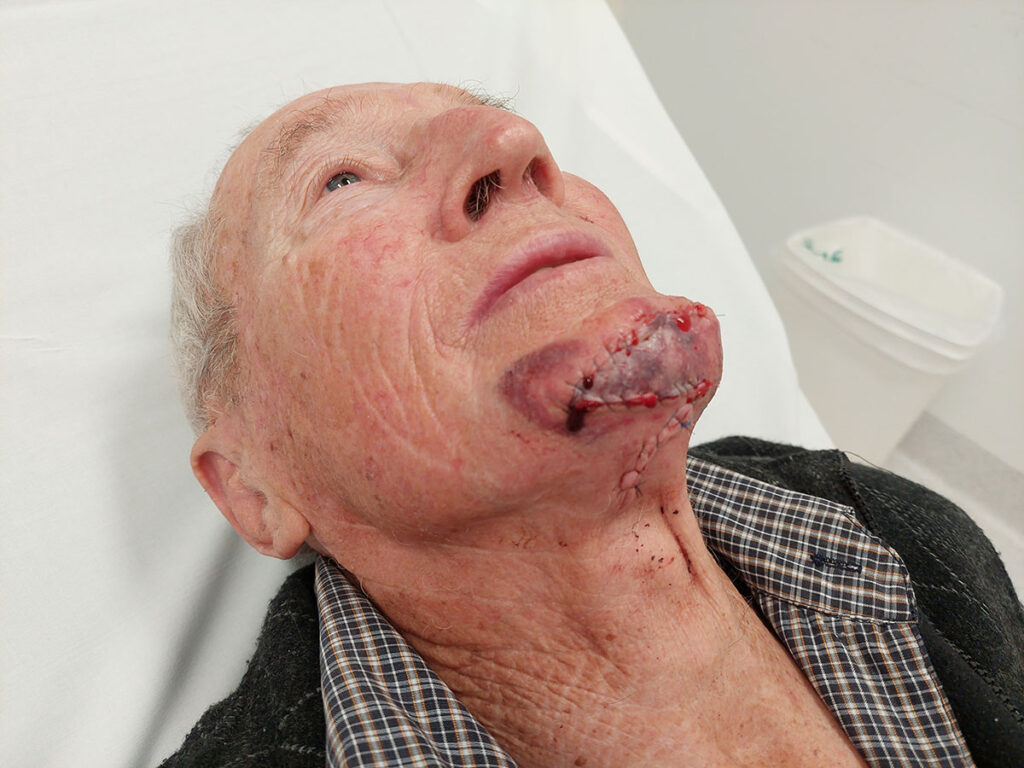
‘A mass that wouldn’t recover’
Having played golf weekly for 70 years and keeping a handicap of 10, Dick North has had his fair share of sun – and no sun protection for much of it. In 1961 he moved to Dubbo for six months but stayed. He has been a member at Dubbo Golf Club ever since.
It was 30 years ago that he experienced his first melanoma, which he had left too long. He ignored the issues with his skin on his ear and chin as much as he could but had to end up doing something when the skin in both spots opened up. “My skin was ugly – a mass that wouldn’t recover,” he explains. “The local Dubbo doctors took out a heap of skin and put flaps over my ear and my chin.”
Eighteen months later, he went on to see a professor at the Mater Hospital in North Sydney to have six melanomas in a row removed, and eventually required a local chin replacement, a large ear replacement and had “two big slices cut from my cheek”. He says his arms are “pretty messy” too, with lesions and “dried-up” pieces.
Still playing golf at 84 years young off that 10-handicap, North now wears a wide-brimmed hat and sunscreen. His conclusion: “Cover up or get chopped
up later.”
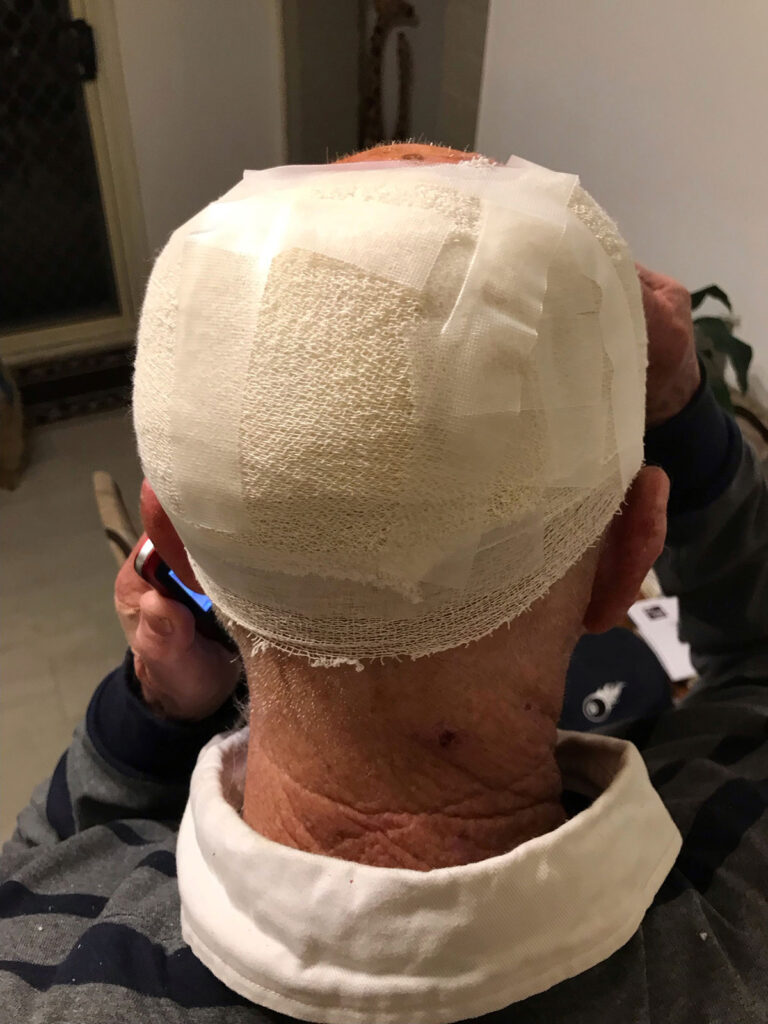
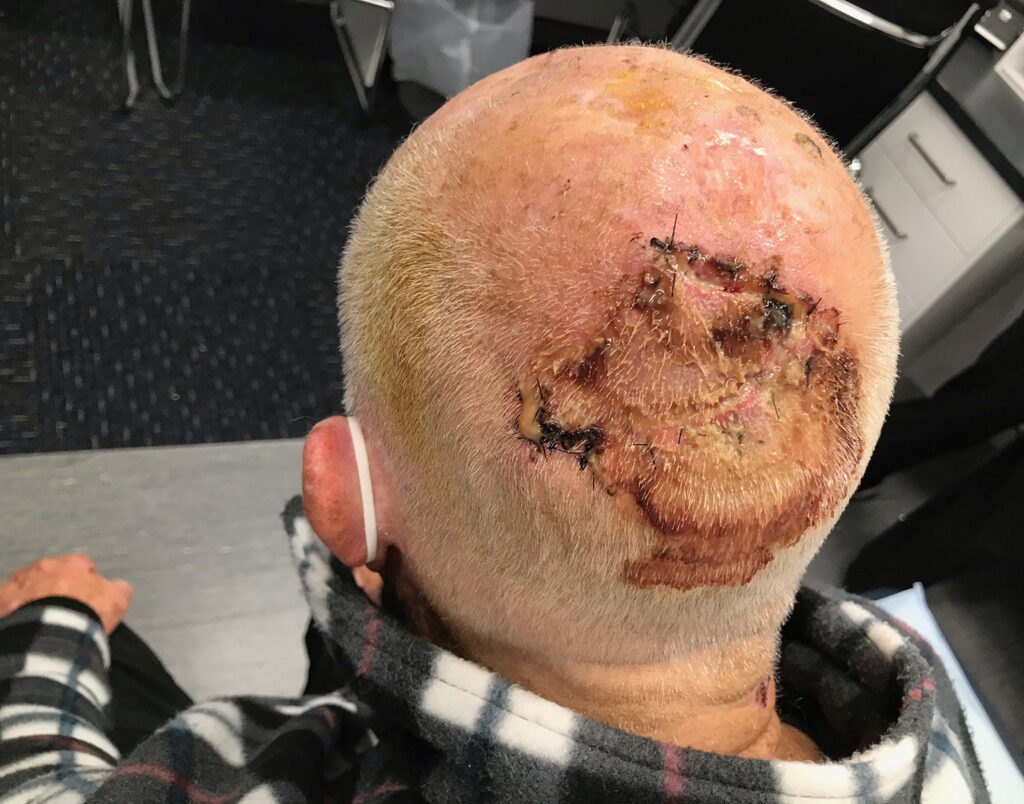
‘It’s been a nightmare’
Mel Hutchby, now 74, is another case in point. A member at Morisset Country Club since 1981, and past president and board member for 20 years, today he has been a member at Kooindah Waters Golf Club on the New South Wales Central Coast for three years. With a handicap of 11, he has been involved in golf all his life.
“I started playing when I moved to Morisset at the age of 32 and played at least once a week, sometimes twice,” he says. “The thought of getting cancer never entered my head, unfortunately, and so I never wore any sun protection or, at most, maybe a cap later on.”
As often occurs with men, Mel’s wife made him have two sores on his arm checked in 1999. These turned out to be his first melanomas. They were removed surgically, and his journey began.
“From this point on I was on regular check-ups at a cancer clinic. My next cancers were on my scalp, which seemed to just look like sores but were melanomas, so I had to have them surgically removed. My next one was on my head again six months later,” he explains. “This one was very invasive and required removal and radiation therapy every week for six weeks. Since then, I’ve had nine more removed and skin grafts to fill the hole left in my scalp. I also had one on my back that was aggressive so required a large cut.”
For Hutchby, this has been an ongoing thing for more than 20 years from age 50. “It has been a nightmare for myself and my wife, who has had to play nurse with cleaning and dressing wounds. Today I am still fighting the battle with my latest melanoma being my worst for me, as it is taking weeks to heal and I’m not getting any younger,” he says.
Hutchby still plays golf most weeks when his melanoma removal allows him to. His biggest takeaway? “Always put sunscreen on your head and any uncovered skin, wear a hat and make sure you get your skin checked yearly.”
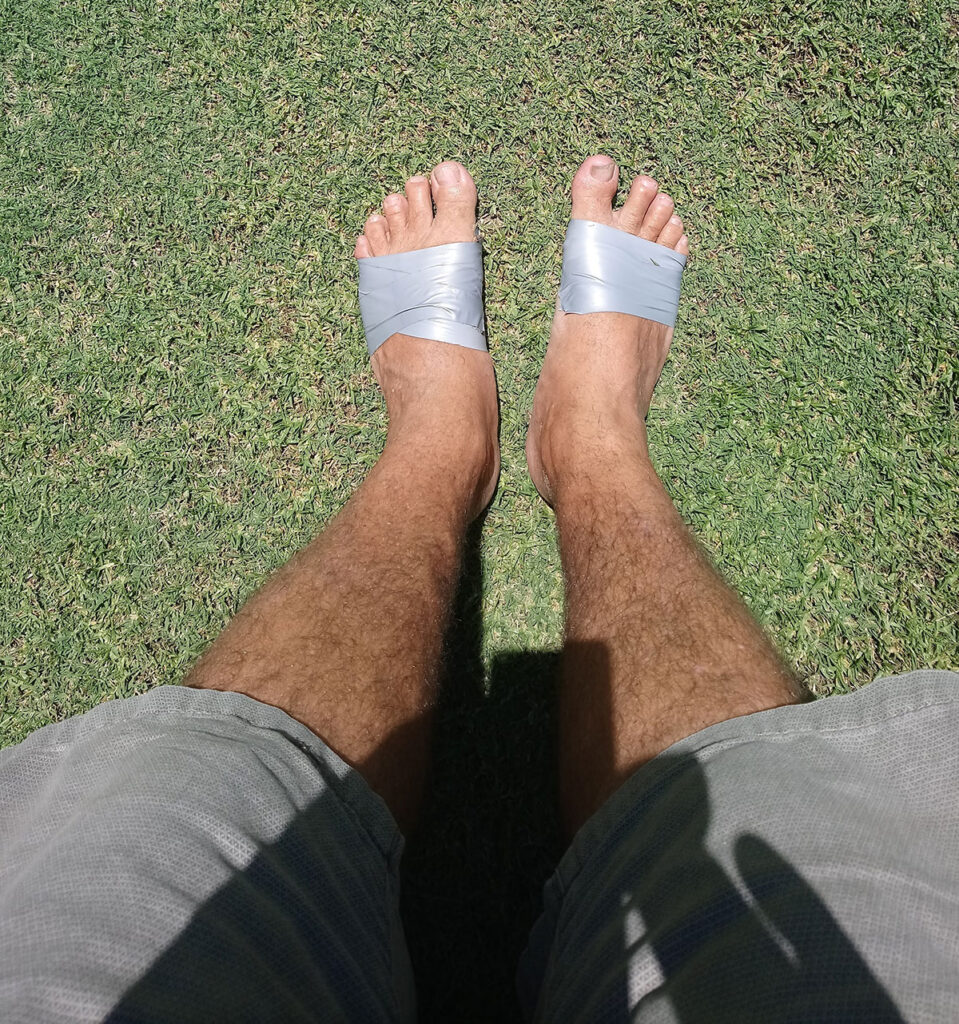

‘I’ve had to play with duct tape on my feet’
A member at Nambucca Heads Golf Club in northern NSW for 18 years and known as ‘the barefoot golfer’, Colin Wormleaton grew up on the beach. He started playing golf as a “little kid” then, after a few years of football, got back into it in his 20s, playing twice a week.
“In those days I never wore any sun protection – I didn’t even know about it – except for a ‘peak’ and a bit of zinc,” he says. “Then my daughter, who’d finished school, and I got a job at the local meatworks. While working together she harassed me to get a skin check, which I did. There was nothing wrong. Three months later, I felt a lump under my arm. It turned out to be a melanoma.
“Within a week I had it cut out, then four days later, I was told it was stage 4. Before I knew it, I was getting all these tests. The melanoma had started on my back, but my lymph nodes caught it all. Under my arm, the cancer grew to the size of a grapefruit within four weeks. It was so quick! I ended up with cancer of the liver, too. It was a huge shock.”
Wormleaton, now aged 58, has had no cancers since then. He did, however, require treatment: targeted therapy that “ate my cancers out” within 18 months.
“After two years it was all gone,” Wormleaton says, “but the treatment does things to you. It has a lot of side-effects. I had all of them. The worst has been with my feet, which burned so much I couldn’t wear shoes because of nerve damage. Since then, I’ve played golf in bare feet. Sometimes it’s been so painful I’ve even had to play with duct tape on my feet because they’re so beaten up or I play golf wearing thongs – that’s why I’m known as the barefoot golfer! These days, I get around in a three-wheel cart.”
Today, he has a handicap of 7, and says, “Life carries on as normal. At the end of the day, just cover up.”

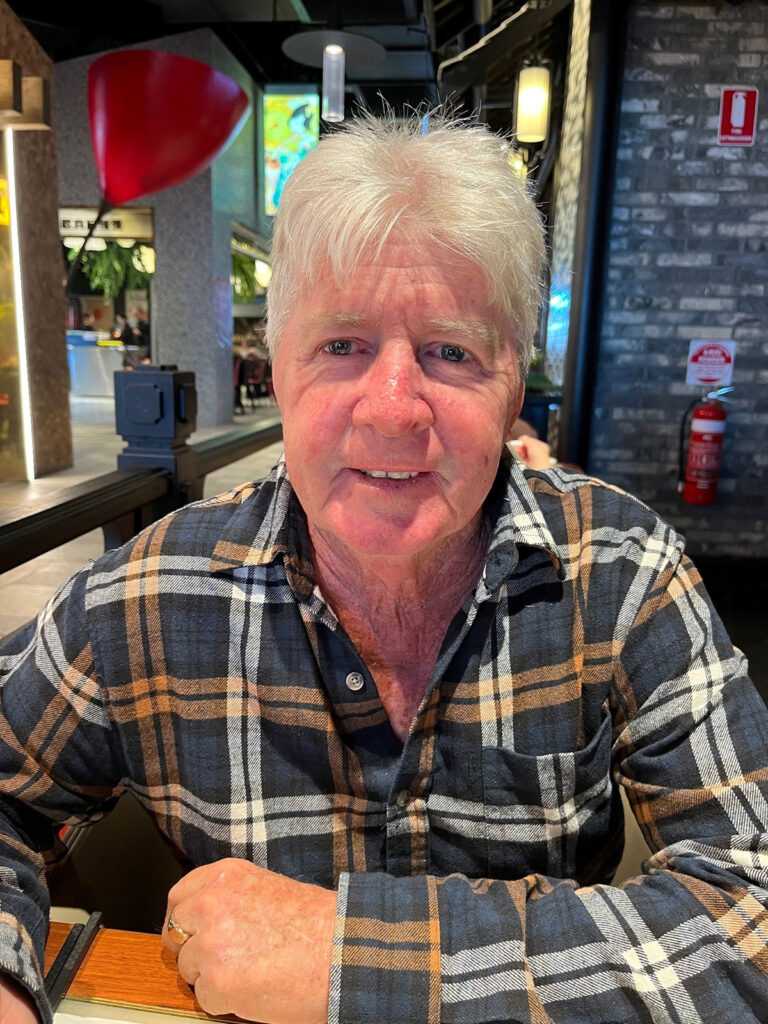
‘I felt like locking myself away’
Peter Beard, a retired golf pro who is now a member at Pacific Dunes Golf Club in the Port Stephens area of NSW, has played golf since the age of 7. His dad was a club professional at Bayview Golf Club in Sydney’s northern beaches, and he’s now played golf non-stop for 60 years – and grown up near the beach.
“In the 1960s I can remember using white zinc on my face and very little headwear. From the 1970s I used an eyeshade for golf,” he explains. “Fortunately, in those days, the golf professionals’ dress code included long trousers, so I didn’t wear shorts through my working years of playing golf from the age of 17.”
Beard never worried about skin can cancer until 1994, when his ex-wife saw a skin specialist for a basal cell carcinoma (BCC) and that was when he noticed something on his chest that turned out to be a melanoma. That year, he was operated on for the removal of the melanoma plus a BCC on his cheek, which required a flap.
“From that time on, I continued seeing my plastic surgeon, a person I trusted with my life. For a few years, I had acid peels on my face to remove unwanted crusted growths and underwent an Obagi treatment to revitalise my skin,” he says.
“Over the past 30 years, I’ve continued to be checked when cancers start appearing and have had them removed each time – three times on my back, once on my right arm, twice on my left leg, once on my right instep, a couple on my stomach area, five on my nose plus a number of spots on my arms that are frozen off. These were all done as day surgeries and mainly required flap surgery. Last year, I had three BCC ops on my nose; the last one requiring a skin graft taken from my cheek.”
Beard, now 67 and with his handicap still sitting at plus-1.5, is still playing golf and loving it. “When my first skin cancer occurred, I felt like locking myself away: no more teaching golf; stay out of the sun! But life must go on and golf was my life. I loved playing competitively and I couldn’t stop teaching people to play this great game. I do wear a broad-brimmed hat now and I don’t forget the sunscreen.”
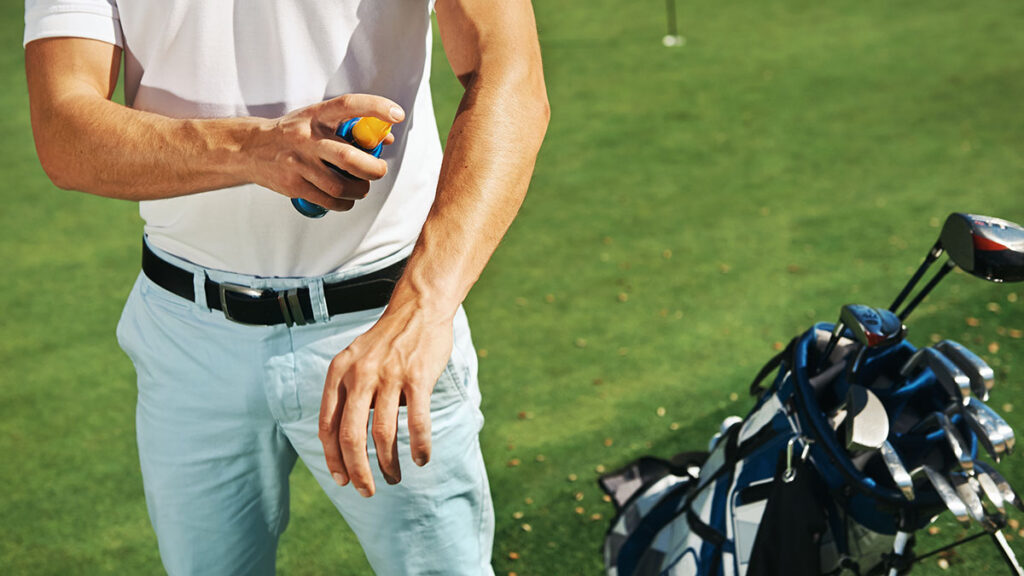
It’s all about protection
These stories show just how things can go wrong when, in Australia, every year skin cancer accounts for about 80 percent of all newly diagnosed cancers. Dr Stenner says the findings highlight the importance of being sun smart when out on the fairways.
“Playing golf regularly has a range of excellent health benefits, from helping you stay fit and active, to keeping you in touch with friends,” he says. “For example, if you walk an average golf course, you’re walking at least five to seven kilometres every game, often more. Add a bag of golf clubs and maybe two to three rounds a week, and you can see just how good golf is for your endurance, muscle tone and wellbeing.”
However, with golfers spending four or five hours out in the sun each game all year round, the study revealed 27 percent of golfers had been diagnosed with skin cancer, compared to only seven percent of the general population.
“This study confirms that golfers have an elevated risk of skin cancer. Knowing that, players should more actively strive to protect themselves,” Dr Stenner says.



